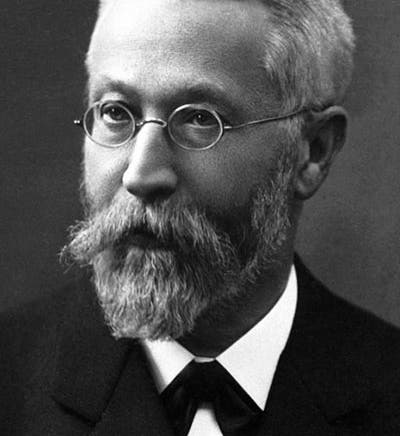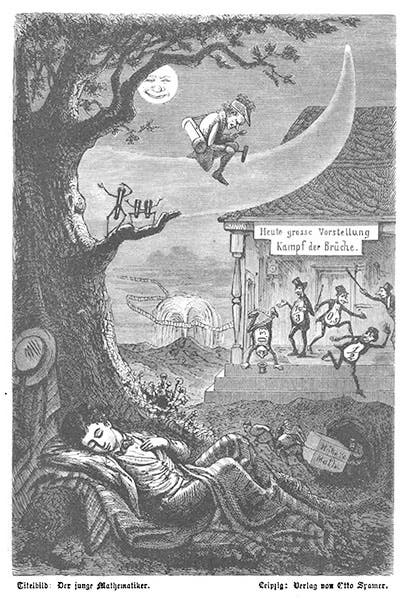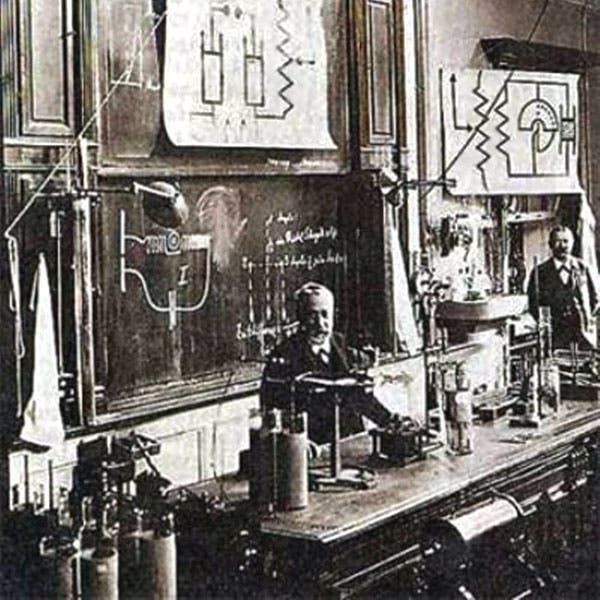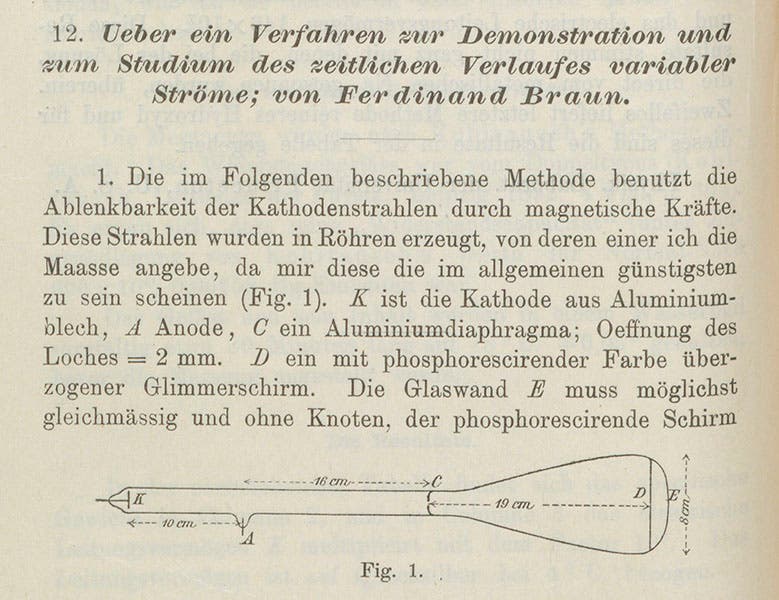Scientist of the Day - Karl Ferdinand Braun
Karl Ferdinand Braun, a German physicist and inventor, was born on June 6, 1850. The sixth of seven children, Braun demonstrated an early talent for mathematics. He studied physics at the University of Marburg before earning a doctorate in the subject from the University of Berlin in 1872. On the advice of his father, after graduation he secured a teaching position at Würzburg University and later at St. Thomas Gymnasium in Leipzig, one of the oldest and most distinguished high schools in Germany. In 1876, he published his first book, Der junge Mathematiker und Naturforscher (The Young Mathematician and Naturalist), which promised to provide students with an “introduction to the secrets of the number and wonders of arithmetic” (second image).
In addition to teaching, Braun continued to pursue his own scientific research. While working at Würzburg, for example, he began conducting electrical experiments on crystals of galena (lead sulfide). While probing his samples with a metal wire, he determined that electrical current flowed more readily one way across the crystal’s surface than the other. By repositioning the wires, he could force the current to flow only in a single direction, a phenomenon known as rectification. Braun’s research later found a practical application in crystal radio sets, which used rectifying materials like galena to detect wireless transmissions.
Braun’s crystals were not his only contributions to radio technology. By the late 1890s, Guglielmo Marconi had successfully demonstrated a transmitter that used a spark between two electrodes to generate radio signals, but his system’s range was limited to approximately 15 kilometers (9 miles). Braun, who had left his high school teaching job to become a physics professor at the University of Strasbourg, eventually overcame this limit by designing a new sparkless antenna circuit that was magnetically coupled to the transmitter’s power supply. He also designed a new form of antenna that enabled the transmission of radio waves in a single direction. Braun published several articles on radio which were subsequently compiled into a 1901 brochure entitled Drahtlose telegraphie durch Wasser und Luft (Wireless Telegraphy Through Water and Air) (fourth image). In 1909, he shared the Nobel Prize in Physics with Marconi “in recognition of their contributions to the development of wireless telegraphy” (first image).
Although Braun devoted the latter years of his life to his radio research, he is better known today for another invention. In 1897, he published an article in the Annalen der Physik, which described a new instrument that he created in order to study high-frequency, alternating-current electricity. (fifth image).
Building upon the research of German physicist Heinrich Geissler and British chemist William Crookes, Braun removed the air from a glass tube, which contained a positive electrode or anode (labeled “A” in the diagram above) and a negative electrode or cathode (labeled “K”). When voltage was applied to both electrodes, negatively charged “rays” were emitted from the cathode. (Today we know that these “cathode rays” are actually streams of electrons.) Braun figured out how to focus these rays so they struck a phosphor-coated screen on the opposite side of the tube (labeled “D”), which glowed whenever it was struck by the resulting beam. In addition, he placed an electromagnetic coil near the neck of the tube, which allowed him to change the beam’s direction. By applying a voltage to the coil, he could trace waveforms on the screen, which mirrored the behavior of the corresponding electrical signal.
Electrical engineers will recognize Braun’s instrument as the first modern cathode ray tube (CRT), as well as the first oscilloscope (sixth image). Those without a technical background will be more familiar with another application of the CRT: television. Soon after the publication of his Annalen der Physik article, researchers realized that one could theoretically use an electron beam to generate an image on a phosphor coated screen. It would take several decades to transform this concept into a practical television system, but by the mid-20th century, TV sets with picture tubes based on Braun’s CRT would become a common feature in living rooms around the world. Benjamin Gross, Vice President for Research and Scholarship, Linda Hall Library. Comments or corrections are welcome; please direct to grossb@lindahall.org.











